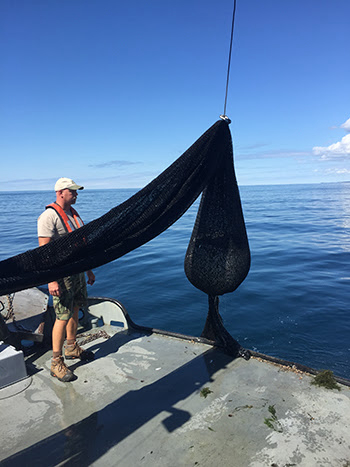Camping Necessities
By Glen Wunderlich
Charter Member Professional Outdoor Media Association (POMA)
The Michigan inland-waters trout season is upon us and the camper is packed for an “Up North” adventure. One by one, as items are crossed off the list, I’ve learned that the list itself must be fluid; outdated items are crossed off and left behind, while modern gear is added.
The campsite will be rustic and that means my self-sufficient tendencies will replace running water and electrical hook-ups. One of the creature comforts I’ve come to enjoy is a daily, hot shower and here’s how it’s done.
Some type of outdoor shelter is required and store-bought models never made it to my list. Instead, my innate cheapness has me toting along a portable hunting blind turned bath house. It’s a unique design similar to an umbrella with zip-up sides. A rubber-backed carpet piece becomes the shower floor, while the umbrella framework allows hanging of the shower head.
The heartbeat of the shower is a Zodi hot shower fueled by propane. The original pump has been replaced with a modern, rechargeable unit that is far better than the old D-cell pump. A 5-gallon pail is filled with enough water (about 3 gallons) for a good shower. To expedite the heating of water, it can be pre-heated on a stove or the Zodi unit can do the job but it takes more time to go from ice to nice. To get the water to the desired temperature, simply put the shower head into the bucket with the pump and fire up the heater and begin recycling the water to the desired comfort level.
It is recommended to recharge the shower unit after each use. Newer vehicles have USB ports for recharging, but operating a motor vehicle to merely recharge the pump, doesn’t make sense, although it will work just fine.
A better solution is to purchase a portable power station. These modern marvels are basically large batteries that can recharge almost anything off the power grid. They’ll power anything from refrigerators to phones; the capacity of the electrical power sources are about as large as one’s wallet and some can be successfully recharged with solar panels, making an off-grid experience somewhat luxurious indefinitely. (The local cheap mart has small units (Vault) on closeout for $75 now.)
Since lamps and flashlights have been upgraded with rechargeable batteries, there are no worries about having extra throw-away batteries.
White-gas stoves and lanterns are no longer used. Lanterns are powered with rechargeable batteries and a small cooking stove is powered with propane – a much safer and affordable option.
However, those 1-pound propane gas bottles are about $5 each, unless one is able to refill them. Simply purchase an adapter for about $10 (available on Amazon or Ebay) and it will connect a 20-pound tank to a 1-pound bottle. Chill the small bottles first, then twist them onto the large tank and set the assembly upside down and open the valve on the large tank. In a few minutes, the small bottle is filled and you can pat yourself on the back. YouTube has the videos, too.
All this for a fresh trout breakfast? You bet!








